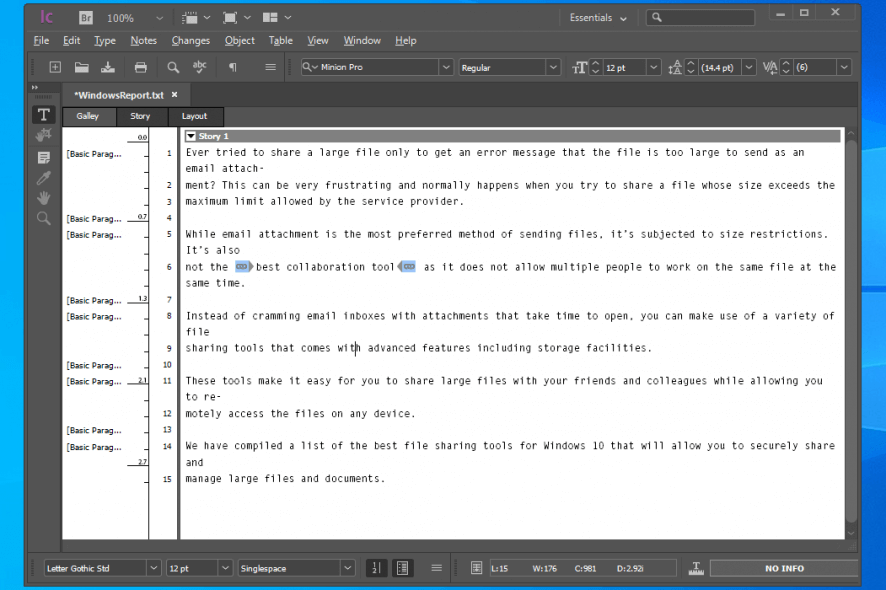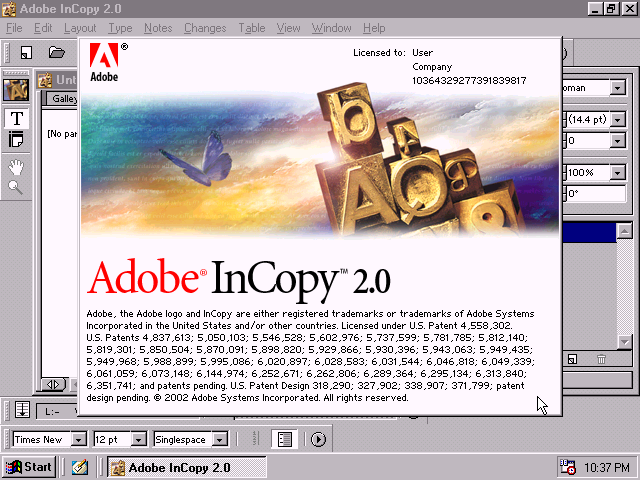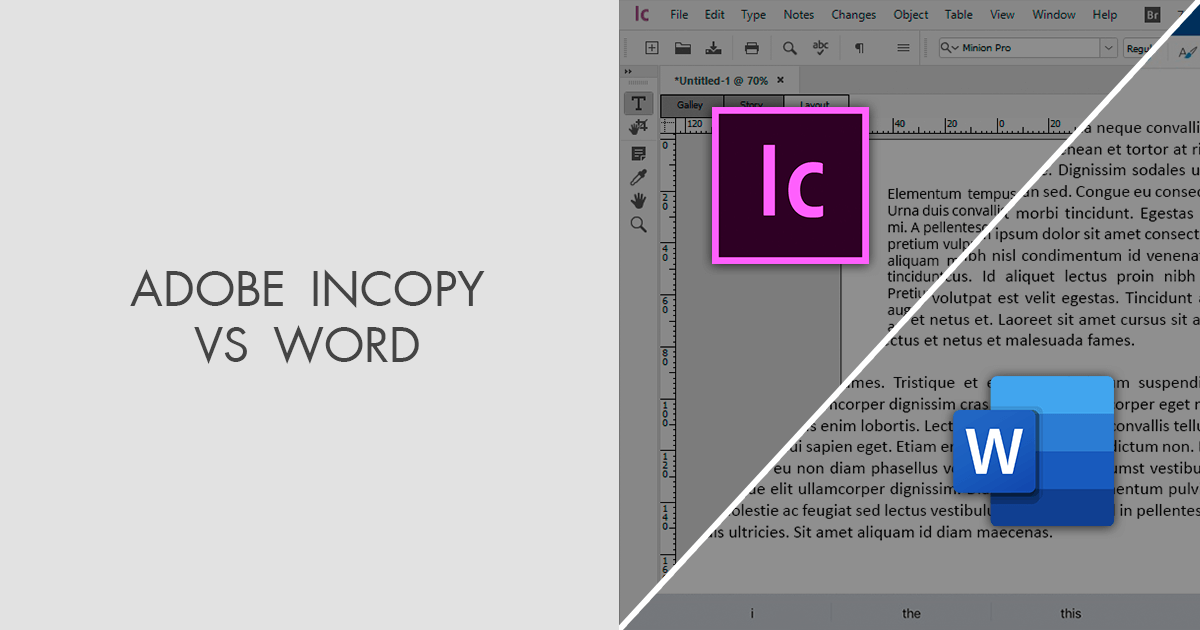
- #ADOBE INCOPY VS GOOGLE DOCS TRIAL#
- #ADOBE INCOPY VS GOOGLE DOCS PLUS#
- #ADOBE INCOPY VS GOOGLE DOCS WINDOWS#
#ADOBE INCOPY VS GOOGLE DOCS PLUS#
So I see the layout just as it's shown in InDesign, right? And if I want to fix stuff, like you can see drought is misspelled, I'm just going to click right inside here, zoom in with commander control plus and start to select the word and fix it. And there's Acme and I've already in issue 59 and I'm going to open the InDesign file.
#ADOBE INCOPY VS GOOGLE DOCS WINDOWS#
I'm going to use the windows version of InCopy here, which has access to that same Dropbox folder and I'll choose file open. And those are shown by, they have this little icon of a glow with an arrow on them, whenever a story's editable to InCopy.

In the stories folder, it's exported every story from the InDesign file. So what it has created is here in the finder, here's our Acme shortcut and it is Leaf and Mortar Magazine.

It pulls the first few words of every text frame to give it a unique file name. You'll see what's going to happen in a minute, InDesign exports all of the stories, that is the individual text frames to that folder and they appear here. I'm going to make a new folder here called Stories, and I'll just call them text. Essentially the InDesign user just needs to export all the stories to InCopy, format and here, I've created a folder in Dropbox, in our shared folder called Issue 59 and inside here is the InDesign file. I'm going to go to normal edit mode and get it ready for the InCopy user. It's just a few spreads from a magazine and we're looking at it in InDesign and preview mode. I have here a sample layout that we'll be using in this chapter. So it's the least expensive way to get access to all the Adobe (indistinct) for one thing.
#ADOBE INCOPY VS GOOGLE DOCS TRIAL#
I want to jump over to Google Chrome really quick to just let you know that you can get InCopy as a free trial for a week and you could purchase it for your editors for 4.99 a month or 60 bucks a year. You can only have one InDesign user open up the layout at a time but you could have multiple InCopy users, all these people, opening up the layout at the same time, and yes, they opened up the layout in InCopy. And they would all have access to all the files, the layout, and the linked stories. And that folder would be synced to everybody's local desktop, everybody on the team. In this example, you would have the InDesign file and it's linked stories in the cloud in a folder. So many, many users are moving to the cloud for this kind of work and I talked about that in a previous chapter. Now a lot of people these days don't have a network file server. You can work on it when it's convenient for you, when it makes sense, because you always have access to the files, the live file sitting on the server. But the idea is you don't have that domino effect of waiting for the person ahead of you to finish something. And in the end, the designer exports the final output. There's little printouts next to a couple of these computers to show you that, you know, they can work on a printout, not everything has to be done on the screen. It's very common for it to be mixed platform. In this schematic, the designer has the Macintosh and the editors all have laptops. So it is in a folder that everybody has access to, the InDesign users and the InCopy users. The layout sits on the file server and the layout has linked stories and I'll show you what stories are in another video but I'm also going to demo it in this video. Instead, let me show you, I have a little schematic up here of what it would look like if you have a network file server. Do you remember this slide where the designer spits out version one? And then it makes the rounds of different people who have to mark it up with changes and corrections and it goes back for version two and so on and so on and so on, ad infinitum, ad nauseum until it's final. And one of the first questions is, well, what is it for? What does it replace? And it replaces this mess for the most part.

I've been teaching this solution to hundreds of companies over the past dozen years or so. And that's using Adobe's own two products, InDesign for the designers and InCopy for the writers and editors. Now I'd like to talk about, what to me is one of the slickest and easiest workflows for design and editorial collaboration.


 0 kommentar(er)
0 kommentar(er)
